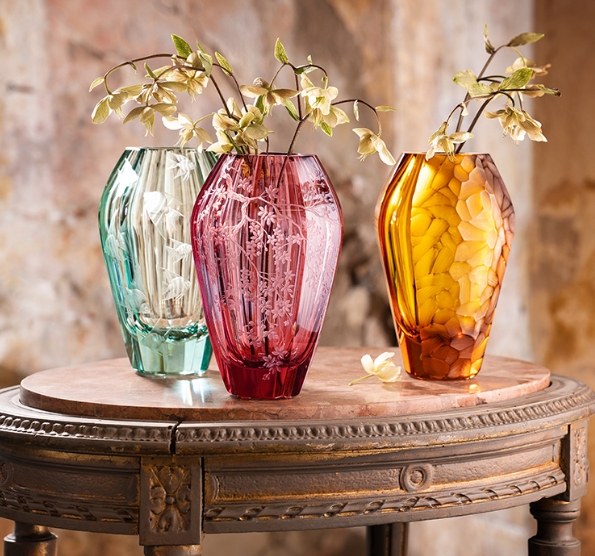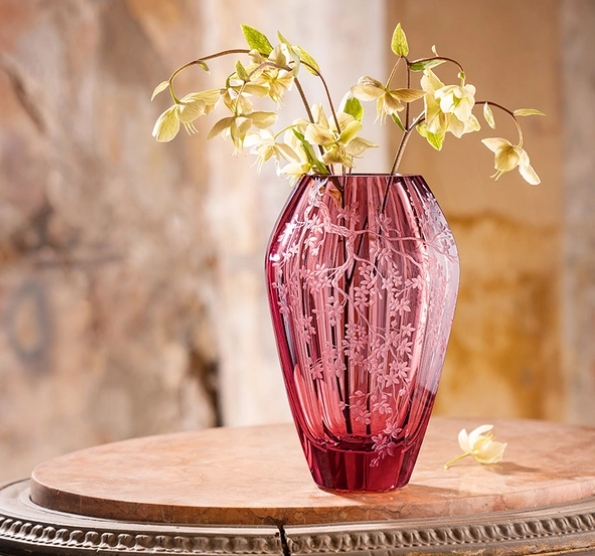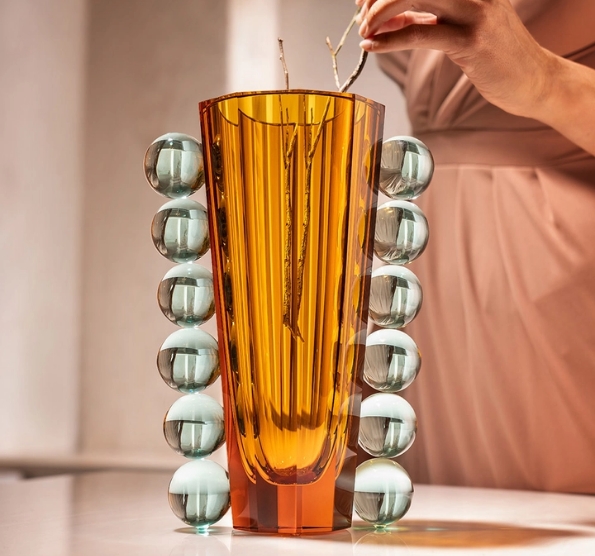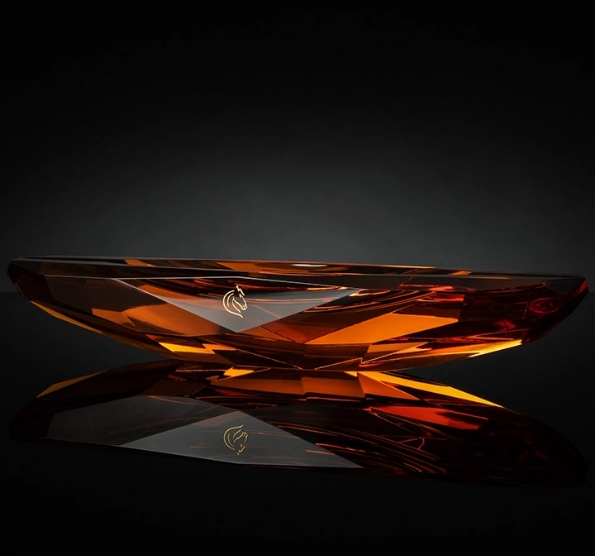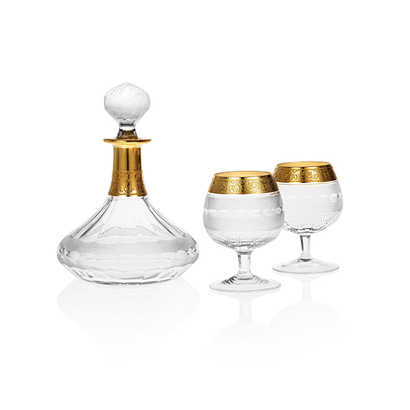Breadcrumbs navigation
- Home page
- About Moser
- Blog
- Splendid. The collection which conquered the world

Splendid. The collection which conquered the world
The Splendid collection belongs among the perennial stars and the most iconic products of Moser portfolio. This year, this legendary set celebrates 110 years – and continues to fascinate all over the world. Here’s its story, in which at least 36 pairs of hands are involved.
The year 2000 has come. A summer residence of Spanish kings and queens, situated close to a picturesque town Segovia, hosts rather an uncommon exhibition. The exhibition presents both times historical and contemporary – all within Moser glass. On such an occasion, the Spanish King Juan Carlos I. receives a present, a present that could not have been more symbolic. He receives the collection Splendid – with a royal symbol included.

This is only one of the stories that justify why Splendid is recognized as Royal Glass. Monarchical dynasties and notable politicians from all over the world grew fond of this collection – for its exceptionally elegant features, typical for the drinks sets and decorative pieces. In 1947, the English queen-to-be Elizabeth II. was presented with the Royal Glass on the occasion of her wedding. She received this treasure from the then Czechoslovak president Edvard Beneš. Sixty years later, when celebrating her diamond wedding anniversary – as a queen – Elizabeth II. received other Splendid pieces to her collection. For that matter, Splendid is integral to any wedding table. In 2004, glasses from the set embellished the banquet of prince royal Frederick and Mary Elizabeth Donaldson.

Visionary Leo Moser
Neoclassical Splendid remains one of many collections, of which the proud author is known to be Leo Moser. In 1911, while designing the collection with his colleagues, Moser worked as the technical manager of the glass factory. He was assigned to originate a product responding to the then taste. Also, the product was expected to serve as the embodiment of the technological options of the glass factory, which were
rather broad. Therefore, Moser opted for the traditional pattern, together with the cut composition of mitres – all performed as of a master, of course.

Splendid combines various types of cuts – the stem is sharpened to edges, the claret is adorned with a subtle cross-cut, that is nearly around the whole object. Via crossing those, there originates a system of diamond-shaped pyramids. Leo even employed olive lenses in the system. Those somehow blend in with the cross-cut, while wonderfully reflecting the light. To perform the cut flawlessly, the cutter ought to be deeply focused and absolutely precise.

Such a turning collection as Splendid is, introduced one more novelty – rather extraordinary at that time – a distinct oroplastic embellishment with an acant pattern. The glass factory got this technique even patented in 1919. Thanks to the oroplastic made of 24carat gold, the collection appears even more precious. You may not miss it at any festive table, especially if adorned with personalized initials or coats of arms.
Limited edition, unlimited charm
An exceptional piece of work deserves an exceptional honour. On the occasion of the 110th birthday of the Splendid collection, Moser presents a limited edition – adorned with the original emblem. Even you may have the Royal Glass at home – as Splendid would be your everyday companion.

What famous figures grew to be fond of Splendid?
Spanish King Alfons XIII.
English Queen Elizabeth
Spanish King Juan Carlos I.
Norwegian Royal couple Harald V. and Sonja
Royal families from Jordan, Saudi Arabia, Morocco, Egypt
Pope Benedict XVI.
Václav Havel
Tomáš Garrigue Masaryk

Where does the word Splendid come from?
You may find its origins in Latin, specifically the word “splendidus,” which means magnificent, glorious.
Splendid collection is being blown in accordance with the so-called pattern (or template), into precise lathe forms of beech wood. Read more about those and discover why each millimetre matters here.


